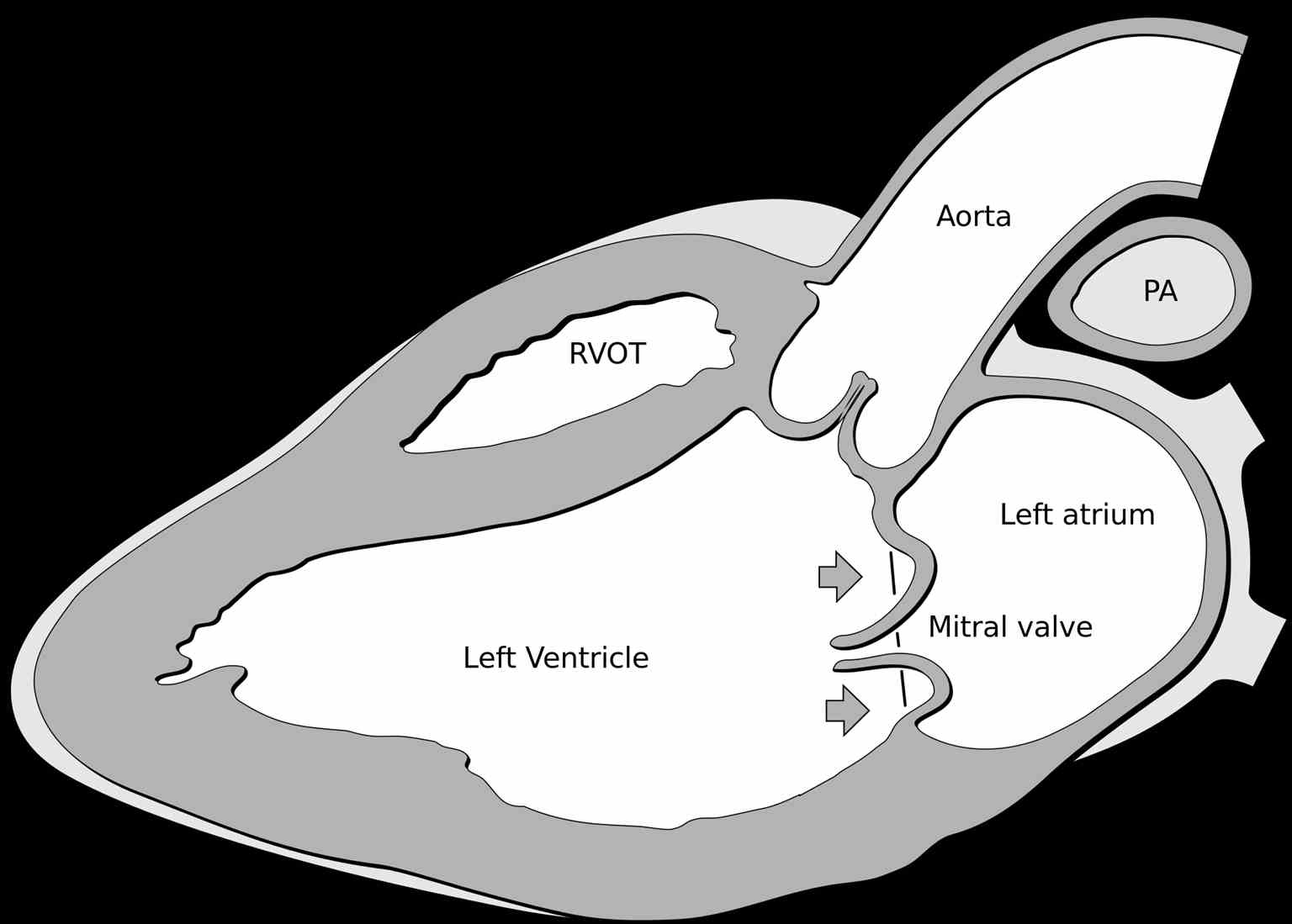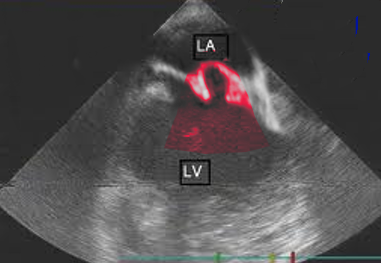[1]
Gati S, Malhotra A, Sharma S. Exercise recommendations in patients with valvular heart disease. Heart (British Cardiac Society). 2019 Jan:105(2):106-110. doi: 10.1136/heartjnl-2018-313372. Epub 2018 Sep 27
[PubMed PMID: 30262455]
[2]
Nalliah CJ, Mahajan R, Elliott AD, Haqqani H, Lau DH, Vohra JK, Morton JB, Semsarian C, Marwick T, Kalman JM, Sanders P. Mitral valve prolapse and sudden cardiac death: a systematic review and meta-analysis. Heart (British Cardiac Society). 2019 Jan:105(2):144-151. doi: 10.1136/heartjnl-2017-312932. Epub 2018 Sep 21
[PubMed PMID: 30242141]
Level 1 (high-level) evidence
[3]
Ayme-Dietrich E, Lawson R, Da-Silva S, Mazzucotelli JP, Monassier L. Serotonin contribution to cardiac valve degeneration: new insights for novel therapies? Pharmacological research. 2019 Feb:140():33-42. doi: 10.1016/j.phrs.2018.09.009. Epub 2018 Sep 9
[PubMed PMID: 30208338]
[5]
Spartalis M, Tzatzaki E, Spartalis E, Athanasiou A, Moris D, Damaskos C, Garmpis N, Voudris V. Mitral valve prolapse: an underestimated cause of sudden cardiac death-a current review of the literature. Journal of thoracic disease. 2017 Dec:9(12):5390-5398. doi: 10.21037/jtd.2017.11.14. Epub
[PubMed PMID: 29312750]
[6]
Delling FN, Li X, Li S, Yang Q, Xanthakis V, Martinsson A, Andell P, Lehman BT, Osypiuk EW, Stantchev P, Zöller B, Benjamin EJ, Sundquist K, Vasan RS, Smith JG. Heritability of Mitral Regurgitation: Observations From the Framingham Heart Study and Swedish Population. Circulation. Cardiovascular genetics. 2017 Oct:10(5):. doi: 10.1161/CIRCGENETICS.117.001736. Epub
[PubMed PMID: 28993406]
[7]
Delling FN, Vasan RS. Epidemiology and pathophysiology of mitral valve prolapse: new insights into disease progression, genetics, and molecular basis. Circulation. 2014 May 27:129(21):2158-70. doi: 10.1161/CIRCULATIONAHA.113.006702. Epub
[PubMed PMID: 24867995]
[8]
Kitkungvan D, Nabi F, Kim RJ, Bonow RO, Khan MA, Xu J, Little SH, Quinones MA, Lawrie GM, Zoghbi WA, Shah DJ. Myocardial Fibrosis in Patients With Primary Mitral Regurgitation With and Without Prolapse. Journal of the American College of Cardiology. 2018 Aug 21:72(8):823-834. doi: 10.1016/j.jacc.2018.06.048. Epub
[PubMed PMID: 30115220]
[9]
Gripari P, Mapelli M, Bellacosa I, Piazzese C, Milo M, Fusini L, Muratori M, Ali SG, Tamborini G, Pepi M. Transthoracic echocardiography in patients undergoing mitral valve repair: comparison of new transthoracic 3D techniques to 2D transoesophageal echocardiography in the localization of mitral valve prolapse. The international journal of cardiovascular imaging. 2018 Jul:34(7):1099-1107. doi: 10.1007/s10554-018-1324-2. Epub 2018 Feb 26
[PubMed PMID: 29484557]
[10]
Vahanian A, Urena M, Ince H, Nickenig G. Mitral valve: repair/clips/cinching/chordae. EuroIntervention : journal of EuroPCR in collaboration with the Working Group on Interventional Cardiology of the European Society of Cardiology. 2017 Sep 24:13(AA):AA22-AA30. doi: 10.4244/EIJ-D-17-00505. Epub
[PubMed PMID: 28942383]
[11]
Parwani P, Avierinos JF, Levine RA, Delling FN. Mitral Valve Prolapse: Multimodality Imaging and Genetic Insights. Progress in cardiovascular diseases. 2017 Nov-Dec:60(3):361-369. doi: 10.1016/j.pcad.2017.10.007. Epub 2017 Nov 6
[PubMed PMID: 29122631]
[12]
Slipczuk L, Rafique AM, Davila CD, Beigel R, Pressman GS, Siegel RJ. The Role of Medical Therapy in Moderate to Severe Degenerative Mitral Regurgitation. Reviews in cardiovascular medicine. 2016:17(1-2):28-39. doi: 10.3909/ricm0835. Epub
[PubMed PMID: 27667378]
[13]
Adams DH, Rosenhek R, Falk V. Degenerative mitral valve regurgitation: best practice revolution. European heart journal. 2010 Aug:31(16):1958-66. doi: 10.1093/eurheartj/ehq222. Epub 2010 Jul 11
[PubMed PMID: 20624767]
[14]
Suri RM, Aviernos JF, Dearani JA, Mahoney DW, Michelena HI, Schaff HV, Enriquez-Sarano M. Management of less-than-severe mitral regurgitation: should guidelines recommend earlier surgical intervention? European journal of cardio-thoracic surgery : official journal of the European Association for Cardio-thoracic Surgery. 2011 Aug:40(2):496-502. doi: 10.1016/j.ejcts.2010.11.068. Epub 2011 Jan 22
[PubMed PMID: 21257316]
[15]
Hirata K, Triposkiadis F, Sparks E, Bowen J, Boudoulas H, Wooley CF. The Marfan syndrome: cardiovascular physical findings and diagnostic correlates. American heart journal. 1992 Mar:123(3):743-52
[PubMed PMID: 1539526]
[16]
Scordo KA. Mitral valve prolapse syndrome health concerns, symptoms, and treatments. Western journal of nursing research. 2005 Jun:27(4):390-405; discussion 406-10
[PubMed PMID: 15870233]
[17]
Scordo KA. Factors associated with participation in a mitral valve prolapse support group. Heart & lung : the journal of critical care. 2001 Mar-Apr:30(2):128-37
[PubMed PMID: 11248715]
[18]
Scordo KA. Mitral valve prolapse syndrome. Nonpharmacologic management. Critical care nursing clinics of North America. 1997 Dec:9(4):555-64
[PubMed PMID: 9444178]
[19]
Mazine A, Friedrich JO, Nedadur R, Verma S, Ouzounian M, Jüni P, Puskas JD, Yanagawa B. Systematic review and meta-analysis of chordal replacement versus leaflet resection for posterior mitral leaflet prolapse. The Journal of thoracic and cardiovascular surgery. 2018 Jan:155(1):120-128.e10. doi: 10.1016/j.jtcvs.2017.07.078. Epub 2017 Aug 24
[PubMed PMID: 28967416]
Level 1 (high-level) evidence
[20]
Bayer-Topilsky T, Suri RM, Topilsky Y, Marmor YN, Trenerry MR, Antiel RM, Mahoney DW, Schaff HV, Enriquez-Sarano M. Mitral Valve Prolapse, Psychoemotional Status, and Quality of Life: Prospective Investigation in the Current Era. The American journal of medicine. 2016 Oct:129(10):1100-9. doi: 10.1016/j.amjmed.2016.05.004. Epub 2016 May 24
[PubMed PMID: 27235006]
Level 2 (mid-level) evidence


